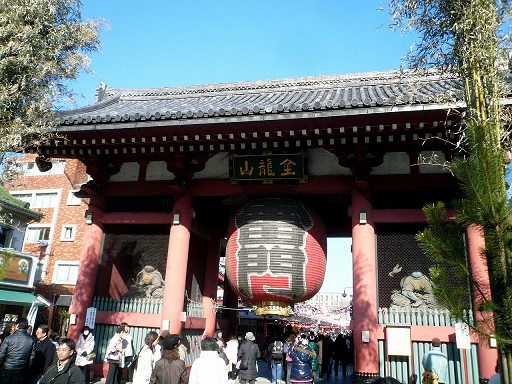Asakusa is the most famous historical place in Tokyo and the view of the "Gaminari-Mon" Gate, shown in the above picture, is one of the most representative views in Japan.
The origin of Asakusa was when HINOKUMA-no-Hamanari and Takenari, who were fishermen brothers, found a Buddhist statue in 628.
HAJI-no-Matsuchi built a temple to deify the Buddhist statue. This is the Sensoji Temple in Asakusa.
If you walk from Asakusa Station on the Tobu Line and the Tokyo Metro Ginza Line to the west, you will see the "Kaminari-Mon" Gate on your right. The gate was originally built in 941 and the current gate was rebuilt in 1960 as a donation by MATSUSHITA Konosuke, who was a founder of Panasonic.
Behind the gate, many souvenir shops line in a row along the approach. This area is called "Nakamise".
Many sightseers walked along "Nakamise" even at night. Especially, new year season is crowded.
At the end of "Nakamise", you will see the gate of Denpoin Temple on your left.
Dempoin Temple was built in 1777 and is the place where monks of Sensoji Temple live. Unfortunately, Denpoji Temple is not open to the public.
Then you will see the Hozo-Mon Gate and the Five-Storied Pagoda.
This view is also impressive. Especially at night, the Five-Storied Pagoda was illuminated.

 Home Page in Japanese: "Shane's HomePage"
Home Page in Japanese: "Shane's HomePage"

 Home Page in Japanese: "Shane's HomePage"
Home Page in Japanese: "Shane's HomePage"